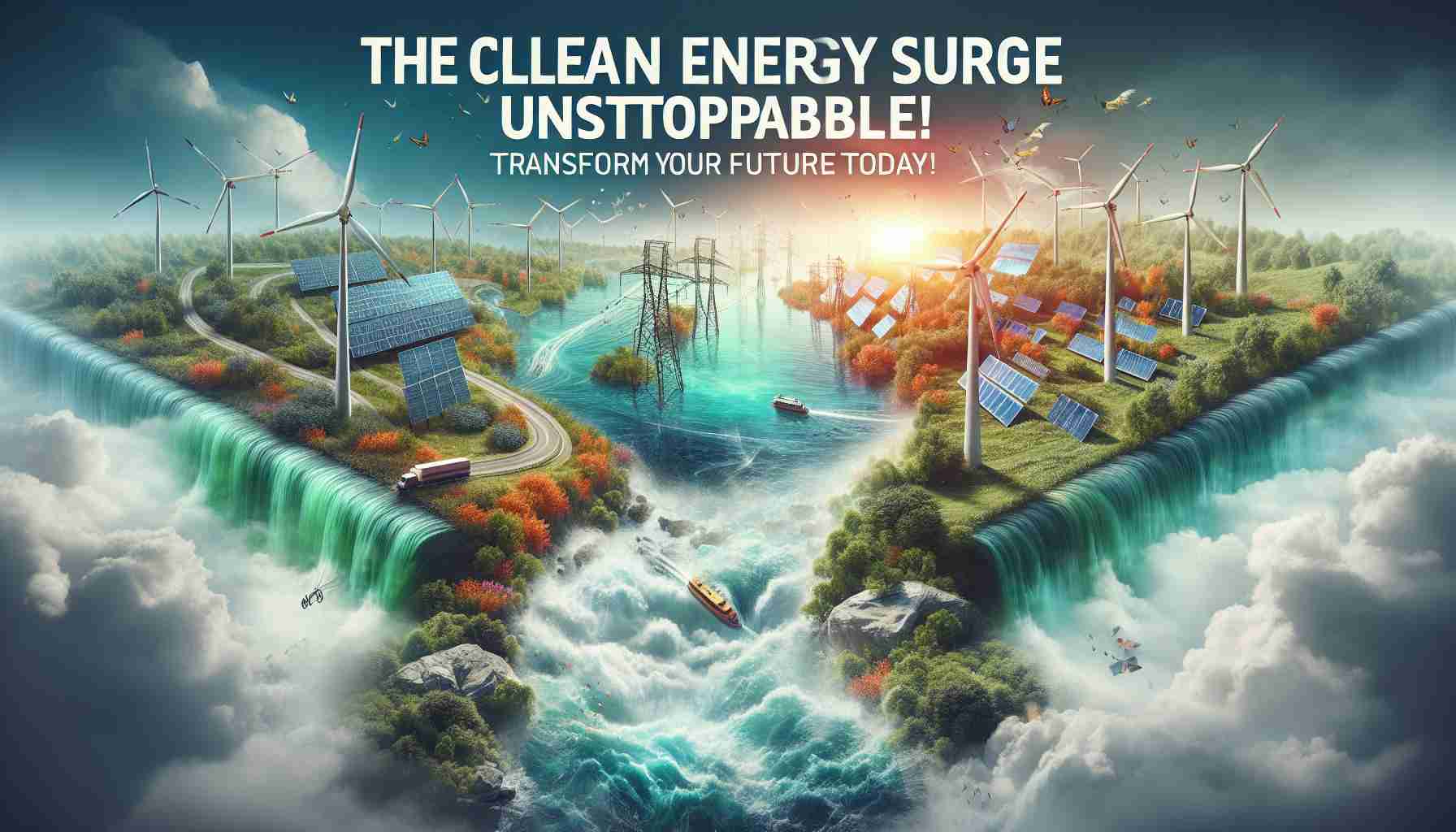
America is in the midst of a clean energy transformation, and there’s no turning back. During a recent visit to Brazil, President Joe Biden emphasized the irreversible nature of this shift, highlighting bipartisan support from citizens enjoying the perks of renewable energy.
The Inflation Reduction Act, a significant initiative from the Biden administration, allocates a remarkable $400 billion to bolster solar power, electric vehicles, and other green technologies. This strategic move aims to dramatically reduce carbon emissions, a major contributor to climate change and its associated environmental crises.
Despite previous claims from some political figures like former President Donald Trump regarding climate change, the employment boom in the renewable sector cannot be ignored. A surprising 60% of new jobs created under the IRA are situated in traditionally Republican states, indicating that the benefits of this transition are far-reaching.
Interestingly, several Republican lawmakers oppose the repeal of the IRA, recognizing the economic advantages it offers. Even oil companies, which previously aligned with Trump, are embracing clean energy projects backed by federal funds.
Globally, climate change has escalated into a security threat, with extreme weather events wreaking havoc on infrastructure and ecosystems. In response, the U.S. has committed over $11 billion toward international climate financing.
As California emerges as a leader in the green energy sector, it aims to maintain its market dominance, potentially influencing electric vehicle policies nationwide. This evolving landscape showcases America’s commitment to a sustainable future, regardless of opposing political agendas.
The Clean Energy Revolution: Transforming America’s Future
The Clean Energy Transformation in America
America is currently experiencing a significant transformation in its energy sector, focusing predominantly on clean and renewable resources. President Joe Biden has reiterated the permanence of this transition during various public engagements, most recently during a visit to Brazil, where he noted the bipartisan support for renewable energy initiatives among citizens.
Key Legislation Driving Change: The Inflation Reduction Act
Central to this clean energy revolution is the Inflation Reduction Act (IRA), which earmarks a substantial $400 billion to enhance infrastructure for solar power, electric vehicles (EVs), and other green technologies. This legislative action aims to substantially lower carbon emissions, addressing one of the primary drivers of climate change and environmental degradation.
Job Creation and Economic Impact
The clean energy sector has emerged as a significant contributor to job creation, with 60% of the new jobs generated under the IRA located in traditionally Republican states. This remarkable statistic underlines the far-reaching benefits of renewable energy investments, challenging conventional political narratives.
Interestingly, a growing number of Republican lawmakers have recognized the economic potential of the IRA, with many opposing efforts to repeal it. Even companies from the fossil fuel industry, traditionally seen as allies of political figures like Donald Trump, are now pivoting toward clean energy initiatives, motivated by federal support.
Global Climate Leadership and Security Concerns
Climate change has evolved into a pressing security issue, with an increase in extreme weather events causing widespread damage to infrastructure and communities. In this context, the United States has committed over $11 billion to international climate financing, reinforcing its position as a leader in global climate initiatives.
California: The Green Energy Trailblazer
As a pioneer in the green energy landscape, California is set to influence electric vehicle policies not only regionally but across the entire nation. The state’s commitment to renewable resources enhances its market position, encouraging other states to follow suit in adopting sustainable practices.
Trends and Innovations in Renewable Energy
– Rise of Electric Vehicles: EV adoption is expected to increase dramatically as consumers seek sustainable alternatives. According to projections, sales of electric vehicles are anticipated to surpass 50% of all new car sales in the U.S. by 2030.
– Solar Power Expansion: The solar energy sector is experiencing rapid growth, with advancements in technology making installations more efficient and affordable for consumers, contributing to energy independence.
– Energy Storage Solutions: Innovations in battery technology are poised to solve energy storage challenges, making renewable energy sources more reliable.
Pros and Cons of the Clean Energy Shift
Pros:
– Reduction in greenhouse gas emissions
– Job creation and economic growth
– Decreased reliance on fossil fuels
– Enhanced energy security
Cons:
– Initial high costs of renewable technology
– Energy storage issues for intermittent resources like solar and wind
– Potential challenges for traditional energy workers transitioning to new roles
Use Cases of Renewable Innovations
Renewable energy technologies are making strides in various sectors, including:
– Residential Solar Power: Homeowners are increasingly installing solar panels to lower utility bills and increase property value.
– EV Charging Stations: The expansion of charging infrastructure facilitates the adoption of electric vehicles, supporting the transition to greener transportation options.
– Community Solar Initiatives: Shared solar projects allow communities to access renewable energy, fostering local engagement and investment.
Future Predictions and Market Analysis
As the renewable energy sector continues to expand, it is predicted that by 2040, nearly 70% of the U.S. energy grid will be powered by renewable sources. This shift not only addresses environmental concerns but also opens up new market opportunities and reshapes the energy landscape across the country.
For those interested in more about clean energy initiatives in the U.S., visit the Department of Energy for an in-depth look at policies and technologies shaping America’s sustainable future.



